“In some parts of the world you can sleep between
nettle sheets, eat off a nettle tablecloth, dine in nettle-enriched
steaks and eggs ordered from a nettle-paper menu, in an emergency
fish with a nettle line, and in the springtime especially
revel with delectable nettle dishes washed down with nettle
beer. In fact, this is only a portion of this wild edible’s
capabilities”. (Angier, p. 152)
There are over 550 species of the Urticaceae family;
three of the 45 genera have stinging hairs. Stinging Nettle
(Urtica dioica) is, of course, my beloved. She got
my attention as I ran barelegged through the woods as a little
girl. Certain that I had brushed against barbed wire caught
in the mass of weeds, I was puzzled that there was no cut
on my shin. Tracing my steps backward, I found her by touch--aggressive
and energetic with her heavy leaves. An unusual dialogue ensued;
like two scorpions in a bowl we regarded each other cautiously.
I circled her, stung with each touch. This episode was forgotten
until I began studying herbal healing in the Wise Woman tradition,
and stinging nettle became my green ally.
There is a belief that the herb you need most is either all
around you or tries to make her presence known. Coincidentally,
U. dioica, an alterative, is a primary treatment
for asthmatic allergies and "nervous" eczema, which
afflicted me as a child. She is known for reducing sensitivity
to food allergies by her binding action on immunoglobin G.
She was grabbing my attention even then. Always stepping on
dandelions? Try making friends and dandelion wine with her!
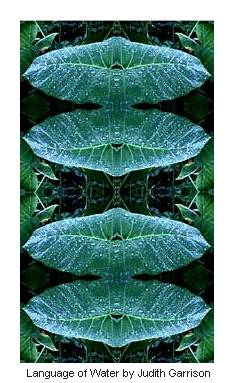 Stinging
nettles nourish and support the entire body, particularly
the endocrine, immune, urinary, respiratory, and circulatory
systems. Nettle root is a kidney ally and lymphatic/immune
strengthener. Germans have been employing Nettle root as a
treatment in prostate cancer.
Stinging
nettles nourish and support the entire body, particularly
the endocrine, immune, urinary, respiratory, and circulatory
systems. Nettle root is a kidney ally and lymphatic/immune
strengthener. Germans have been employing Nettle root as a
treatment in prostate cancer.
The richest soup I've ever had (at the Wise
Woman Center) was the simplest: it consisted of young
Nettle tops brought to the boil, covered, and let sit overnight
before reheating. Nettle beer, my future project, was taken
for gout and rheumatic pain. Swedish peasants traditionally
ate Hemp nettle (Galeopsis tetrahit) and both Purple (Lamium
purpureum) and White (Lamium album) dead-nettle as potherbs
(not of the same botanical family as stinging nettle).
Pfeiffer lists stinging nettle as one of the dynamic plants
"which influence their surroundings in a specific way
so that other plants change their properties or that a soil
changes its character". In experimental conditions, nettle
notably increased oil composition of peppermint plants and
the richness of humus after their introduction into existing
rows of the aromatic plants.
The massive mineral and botanical collection of Linnaeus
(which included 19,000 sheets of pressed plants) contained
a 200-year old mounted nettle plant. During the process of
photographing this collection, the photographer was stung
by this nettle, receiving a "definite blister apparently
similar to one produced by a fresh specimen". Some Indian
species of Urtica are so virulent that the effects are reportedly
felt up to an entire year.
She is spoken of as both an herb of the Norns--for her history
in spinning into nettle cloth--and because the word nettle
is related to the Latin nere, German na-hen, or Sanskrit nah,
to bind. Nettles supplied the material for spinning until
the introduction of Flax into the North. Wild nettles were
used for weaving in Europe at least since the Bronze Age--cremated
bones wrapped in nettle cloth have been discovered in a Danish
burial site from that period. U. dioica is generally resistant
to cultivation, remaining content in moist soils. Attempts
to cultivate her on a wide scale were largely unsuccessful,
so her use was eclipsed by the incursion of Flax (Linum usitatissimum)
and Hemp (Cannabis sativa) into the North. Not until the hardships
of World War I, when cultivated fabric was scarce, was nettle
cloth (Nesseltuch) from wild plants again used so extensively.
It is estimated that Germans harvested over two thousand
tons of wild nettles to weave fabric for their soldiers during
the World Wars. Stronger than flax, fiber from white dead-nettle
was also spun into fishing nets by North American Indians,
through a process of decay rather than retting. The Algonquin
tale is that women were taught to make fishnets by twisting
Nettle fibers on their thighs after Sirakitehac watched the
spider spin, supporting my belief that mythological herb lore
often preserves a sound empirical basis. Among the Norse,
Loki is credited with spinning the first fishnet, which seems
appropriate given some of his other traditionally feminine
activities (such as shapeshifting into a mare and giving birth
to Sleipnir, Odhinn’s 8-legged steed).
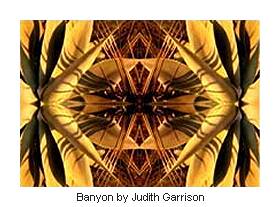 Nettles
have a long history as a treatment for rheumaticism and muscle/nerve
pain like sciatica and lumbago. U. pilulifera--the smaller
and more venomous Roman nettle--was cultivated and used by
the Romans. The Romans are credited with bringing seeds of
this plant with them into Britain; by flogging themselves
with the plants, they reportedly kept warm in the colder northern
climate. Like the Romany, the Romans employed nettles in the
following manner: bunches of fresh nettles were tied together,
and the afflicted area of the body was thrashed repeatedly
to create heat in the limbs and to stimulate blood circulation.
Nettles
have a long history as a treatment for rheumaticism and muscle/nerve
pain like sciatica and lumbago. U. pilulifera--the smaller
and more venomous Roman nettle--was cultivated and used by
the Romans. The Romans are credited with bringing seeds of
this plant with them into Britain; by flogging themselves
with the plants, they reportedly kept warm in the colder northern
climate. Like the Romany, the Romans employed nettles in the
following manner: bunches of fresh nettles were tied together,
and the afflicted area of the body was thrashed repeatedly
to create heat in the limbs and to stimulate blood circulation.
Urtication is the term used to describe this process; the
name Urtica comes from uro, I burn. U. dioica is also known
as an herb of Thorr (Donnernessel), which puzzles some students
of Norse mythology. In Gylfaginning 43, Thorr slays his chariot-pulling
goats, Tanngrísnir and Tanngnóstr (Tooth-barer
and Tooth-grinder; though these names were probably Sturlusson’s
literary invention), and eats them.
After arranging the bones on the goatskins before the cooking
fire, Thorr returns the animals to life by raising his hammer,
Mjollnir, over the bones and blessing them. I perceive this
revivifying action as a metaphor for urtication and suggest
that this is why nettle is sacred to the Thunder God. Indeed,
the Norse believed that when Thorr flung Mjollnir across the
sky, lightning flashed. Certainly a nettle thrashing is a
“fiery” experience! Further, in Holland, young
boys would go out early in the morning to gather bunches of
nettles to tie to the doors of the village houses. Grimm notes
that this was done on the "Zaterdag before Pentecost",
suggesting that it was a Heathen fertility custom which survived
the conversion—perhaps an ancient remnant of flogging
(birch branches were used likewise in the saunas to bring
blood to the surface).
It should also be noted that Thorr was a god of fertility
of both Earth and womb. Bunches of fresh Nettles were also
laid across vats of beer to prevent thunder from turning and
spoiling the beer. Young nettles were boiled and eaten with
meat on Grün-donnerstag (Maundy Thursday). Depending
on the author in secondary sources, stinging nettle was called
Wergulu or Stithe in the Nine Herbs Charm, which was a charm
used by Odhinn for protection against the "flying venom"(one
of four causes of disease in Teutonic etiology). The Anglo-Saxons
used purple dead-nettle in butter based eyesalves and "holy
salves" against disease; red nettle was used in salves
against rash or "elf-shot", another cause of disease
within this etiology (note that many of these texts were written
prior to the establishment of the binomial nomenclature developed
by Linnaeus; so identification of herbs based on folknames
is imprecise at best).
Modern herbalists still use nettles "to bring dormant
energies into action" (Weed). Indeed, some midwives consider
Nettles a primary fertility promoter (second only to Trifolium
pratense--red clover or Rotkeet). She is also the richest
plant source of folic acid, which is vital for fetal health.
One cup of nettle infusion (prepared as indicated in Healing
Wise) provides 500 milligrams of calcium (Weed), iron and
vitamin K to help prevent hemorrhage. The protein, vitamins
and minerals in nettles enriches breast milk, giving nursing
mothers "a green tit" (Parvati Baker). If you are
a woman engaged in the dance of fertility with Thorr, you
would do well to make friends with stinging nettle.
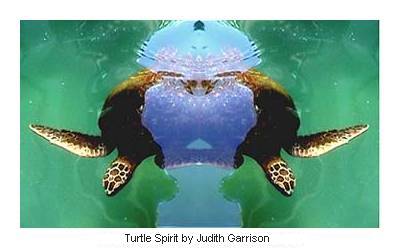 Speaking
of fertility warrants a mention of the green gifts of the
fertile sea. All sea vegetables are vitamin and mineral rich
and nourish the lymphatic, nervous and endocrine systems.
Seaweeds have a special affinity for women in the treatment
of infertility and fibroids, cysts, and lumps in the breasts
and womb. Brown seaweeds, especially Kelp (Alaria esculenta)
are particularly effective against radiation, heavy metals,
and x-rays.
Speaking
of fertility warrants a mention of the green gifts of the
fertile sea. All sea vegetables are vitamin and mineral rich
and nourish the lymphatic, nervous and endocrine systems.
Seaweeds have a special affinity for women in the treatment
of infertility and fibroids, cysts, and lumps in the breasts
and womb. Brown seaweeds, especially Kelp (Alaria esculenta)
are particularly effective against radiation, heavy metals,
and x-rays.
Breast tissue is particularly vulnerable to the radiation
in mammograms; a suggested dose to help your body's defenses
is at least a half ounce of dried Kelp a day for at least
a week following your mammogram. Breast cancer is rare in
Japan, and this is believed to reflect the traditional inclusion
of seaweed in the diet--in soups and stews, for example. Try
adding small bits of seaweed to your tuna salad.
The red seaweed Dulse (Palmeria palmata, for the hand-shaped
fronds) is protein-rich at 25%; if you eat limited protein,
consider adding her to your diet. In Iceland, dulse (folk
name Saccha) was included in soups, eaten dried, baked into
bread, or cooked into relish. Grapestone (Girgartina papilatta)
is quite high in Vitamin C; Icelanders cooked both grapestone
and kelp with water or milk and flour into a thick pudding,
to be eaten with cream. Iron-rich Fingered Tangle (Laminara
digitata) is eaten fresh in Iceland. Laverbread made from
purple laver (Porphyra umbilicalis) is popular throughout
the British Isles; kelp is eaten fresh in the Orkney Islands,
Scotland and Greenland.
Try frying up pieces of kelp in a skillet--they're better
than potato chips. Kelp has a strong taste to some, so you
may wish to try dulse first and gradually increase your consumption.
Irish moss (Chondrus crispus) has a long history as an additive
to vats of beer during brewing; it's discarded at the end.
The action of the seaweed--bonding with impurities in the
beer--is consistent with Kelp's action of chelating toxins
and passing them out of the body. Today, Irish moss, high
in vitamin C, is most often an ingredient in prepared foods
but can be drunk as a tea to treat bronchitis. During World
War I, soldiers who had been gassed in combat were given Irish
moss infusion as a throat and lung treatment.
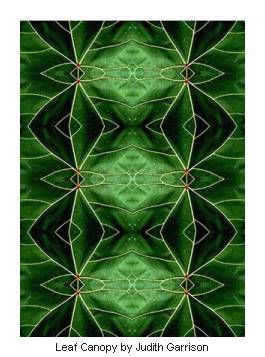 If
you are undergoing radiation treatment, consider making seaweed
a regular part of your diet. "Workers at Swedish nuclear
power plants eat seaweed to reduce and eliminate their absorption
of strontium 90, a radioactive element. Research at McGill
University finds that alginic acid, one of the main components
of seaweed, binds with radioactive strontium". Strontium
90 (which ultimately is released into the atmosphere) becomes
concentrated in calcium and eventually enters the bone marrow
and breast milk. But the alginic acid in seaweed seems to
bind with radioactive isotopes and heavy metals to help flush
them from the body. Chemotherapy patients and bulimics can
also find an ally here; seaweed's mucilaginous nature soothes
digestive tracts irritated from repeated vomiting. Internal
bleeding, such as that caused by duodenal ulcers, is also
reduced by regular ingestion of seaweed. Healing
Wise devotes an entire chapter to seaweed;
I highly recommend this book for your herbal library if you
don’t yet own a copy.
If
you are undergoing radiation treatment, consider making seaweed
a regular part of your diet. "Workers at Swedish nuclear
power plants eat seaweed to reduce and eliminate their absorption
of strontium 90, a radioactive element. Research at McGill
University finds that alginic acid, one of the main components
of seaweed, binds with radioactive strontium". Strontium
90 (which ultimately is released into the atmosphere) becomes
concentrated in calcium and eventually enters the bone marrow
and breast milk. But the alginic acid in seaweed seems to
bind with radioactive isotopes and heavy metals to help flush
them from the body. Chemotherapy patients and bulimics can
also find an ally here; seaweed's mucilaginous nature soothes
digestive tracts irritated from repeated vomiting. Internal
bleeding, such as that caused by duodenal ulcers, is also
reduced by regular ingestion of seaweed. Healing
Wise devotes an entire chapter to seaweed;
I highly recommend this book for your herbal library if you
don’t yet own a copy.
Seaweeds also help stabilize weight by balancing
the thyroid--stabilizing an overactive thyroid as well as
nudging a sluggish one--with their iodine content. Goiter
(linked to a hypoactive thyroid) is rare in Iceland where
seaweeds are a regular part of the diet. An old wives remedy
for weight loss is 1 - 2 cups of Bladderwrack (Fucus vesiculosis
) tea daily for no more than three months. A separate species
of Bladderwrack, Fucus serratus, is much used in Norway as
cattle feed; hence the folk name of "cow-weed".
Linnaeus noted that in Gotland it was called Swine-tang and
fed to hogs.
Swedes also covered their cottages with this plant. The sea
salt in seaweeds is free from the sodium chloride (implicated
in cardiovascular trouble) and free-flowing agents added to
table salt. This may be why seaweeds seem to lower blood pressure
despite their salt content. White, free flowing "sea
salt" indicates adulteration and is best avoided--pure
sea salt has a pink tint and cakes up (Weed). Do not rinse
seaweed in fresh water--the cell membranes will rupture, and
the seaweed will develop a fishy smell (like seaweed pills).
Dried seaweed is ready to eat and smells and tastes just like
the sea.
Ideally, seaweeds are harvested directly off the rocky coast
or ocean bed, alive and attached by a holdfast. However, you
may purchase buy dried seaweed from a natural foods store
(Asian markets in the U.S. often sell fresh seaweeds). The
seaweed sold where I live (Eastern U.S. coast) comes from
Maine; most seaweed sold in the U.S. is harvested off the
coast of Southern California. The only poisonous seaweed is
Lyngbya, appropriately called "mermaid's hair"--a
bright green, tangled mass of skinny strands.
You've probably seen clumps of this on shore—maybe
right next to the cold, clammy "dead man's fingers"
(Scytosiphon Lomentarius). Perhaps the dead man’s fingers
are all that is left of that victim of die Lorelei, man-eating
siren of Teutonic mythology. If you do wild harvest, please
bring a guide skilled in seaweed identification, as a few
non-poisonous seaweeds can still cause gastrointestinal distress.
You'll also need to work with the outgoing tide; two hours
before low tide is recommended to begin your harvest. My local
class went on a sea weed expedition with a local expert and
we all got to take some home--my bedroom smelled just like
the ocean for weeks as the fronds dripped and dried. Mmmmmm.....Summer
on the coast!
 Mendocino
Seaweed Company
Mendocino
Seaweed Company
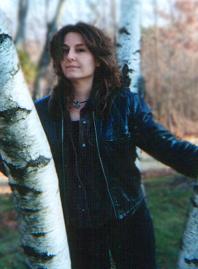 Book
Hoard:
Book
Hoard:
Abbot, I. & Dawson, E.(1978). How
to Know the Seaweeds. Dubuque: Brown Company Publishers.
Instructions for seaweed harvesting.
Angier, B. (1974). Field Guide to Edible Wild Plants.
Harrisburg: Stackpole Books.
Balch. J. & Balch, P. (1997). Prescription for Nutritional
Healing. New York: Avery Publishing Group.
Brightman, F. & Nicholson, B.(1966). The Oxford Book
of Flowerless Plants. London: Oxford University Press.
Blunt, W. (1971). The Complete Naturalist: A Life of Linnaeus.
New York: Viking Press.
Buchanan, R. (1987). A Weaver's Garden. Loveland:
Interweave Press.
de Bairacli Levy, J. (1997). Common Herbs for Natural
Health. New York: Ash Tree Publishing.
Elpel, T. (1996). Botany in a Day, 4th Ed. Pony:
Hops Press.
Foster, S. & Duke, J. (1990). Peterson Field Guide
to Eastern/Central Medicinal Plants. Audubon Society.
Grattan, J. & Singer, C.(1952). Anglo-Saxon Magic
and Medicine. London: Oxford University Press.
Grieve, M. (1971). A Modern Herbal (2 vols). New
York: Dover Publications.
Grimm, J. (1883). Teutonic Mythology (4 vols). New
York: Dover Publications Inc.
Hoffmann, D. (1992). New Holistic Herbal. Rockport:
Element Publishing.
Kreig, M. (1965). Green Medicine. Chicago: McNally
& Company.
LeStrange, R. (1977). A History of Herbal Plants.
New York: Arco Publishing.
Madlener, J. (1977). The Sea Vegetable Book. New
York: Crown Publishers.
Petry, L. (1968). A Beachcomber's Botany. Chatham:
Chatham Conservation Foundation, Inc.
Pfeiffer, E. (1970). Weeds and What They Tell. Kimberton:
Bio-Dynamic Farming and Gardening Association, Inc.
Rohde, E. (1922). The Old English Herbals. New York:
Dover Publications.
Scott, A. (1979). The Saxon Age. London: Croom Helm.
Simek, R. (1993). Dictionary of Northern Mythology
(translated by Angela Hall). London: Boydell & Brewer
Ltd.
Sturluson, S. (1987). Edda. London: Everyman.
Turville-Petre (1964). Myth and Religion of the North.
Westport: Greenwood Press.
Weed, S. (1996). Breast Cancer? Breast Health! New
York: Ash Tree Publishing
Weed, S. (1989). Healing Wise. New York: Ash Tree
Publishing.
Weed, S. (1989). Wise Woman Herbal for the Childbearing
Year. New York: Ash Tree Publishing.
Wheelwright, E. (1974). Medicinal Plants and Their History.
New York: Dover Publications, Inc.
Wood, R. (1999). New Whole Foods Encyclopedia. New
York: Penguin Books.
 Come
join Amy
Ahlberg-Venezia at the
Come
join Amy
Ahlberg-Venezia at the
Wise Woman Center in Woodstock , NY
 April 10th, 2004 Bleeding
Goddess workshop
April 10th, 2004 Bleeding
Goddess workshop 
 April 11th, 2004 Norse
Goddess Runes workshop
April 11th, 2004 Norse
Goddess Runes workshop 
For registrations, contact:
Susun Weed and The Wise Woman Center
PO Box 64 Woodstock NY 12498
phone/fax: 845-246-8081
Or register online at www.wisewomanbookshop.com
Click here to send an
email for more info.






 Come
join
Come
join 